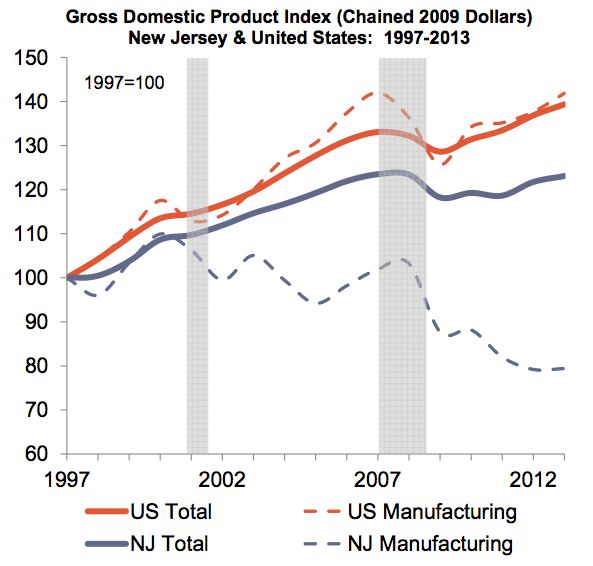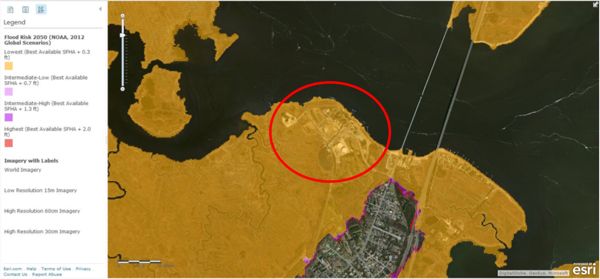Open Space Funding Spectacle Continues – “Keep It Greed”
Senate Environment Committee Condemns Christie ExxonMobil Deal
Senator Lesniak: “This is about restoration and reparation”
Chairman Smith: Deal “shocks the conscience”
The Senate Environment Committee hearing room was standing room only this morning.
(I will write about the ExxonMobil deal in a subsequent post – I am now reading the DEP’s $8.9 billion NRD Restoration Plan.)
[*Update – since Sean Sullivan at Star Ledger has a good story, think I’ll hold off on that NRD post. I don’t have a lot to add to what I’ve already written and it’s going to take more time to digest the DEP’s Restoration Plan – plus I came across some EPA RCRA documents I want to critique as part of that.
One thing I will note here is that Senator Lesniak’s testimony emphasized and echoed my prior post about the distinction between remediation and restoration – and why the deal is even WORSE than its been portrayed in media. end update]
I sat through hours of testimony from historic preservationists, farmland preservationists, and open space advocates – all with their hands out asking for more money.
At least the woman with the red wig who went to Atlantic City with her $100,000 bank heist knew she was handling stolen money.
But not the Keep It Green – Greed Coalition.
They all sat around and praised and congratulated each other for their fine work.
I’ve written about these issues numerous times – most recently on water program cuts – so let me cut to the chase now.
After stealing $71 – $80 million from core DEP programs and inserting a punitive provision into law that prohibits DEP site remediation program from using existing Constitutionally dedicated CBT funds for staff salaries, members of the Keep It Green Coalition today had no regrets.
They didn’t even make quiet noises about “tough choices” or even mention the importance of restoring cuts to the DEP’s “green side” and natural resources.
Nope – nothing.
No regrets, no shame, and no recognition that their theft will have serious negative consequences for key programs that operate across the state if funds are not restored in the budget process.
Instead, they called for more restrictions on DEP parks staff funding, while calling for increases in administrative costs and staff funds for their organizations, and more funds for their pet “stewardship” projects.
I made the following points:
1) Legislators and the various advocates of the Open Space – with their hands out today – will need to work just as hard to support restoration of the DEP program cuts that will result from the money they have stolen.
2) The funding plan completely ignores huge unmet and long ignored needs, including:
- urban parks
- urban forestry
- community gardens
[Clarification: The bill provides: In addition, the bill provides that a local government unit or a qualifying tax exempt nonprofit organization may use a grant or loan for recreation and conservation purposes for the construction of a community garden.
- urban farmers markets in “food deserts”
- Afforestation and carbon sequestration
3) the terms “stewardship” is vague and prone to abuse. It should be strictly limited or deleted. Public funding should be zero.
4) At a time when for DEP programs are being slashed and public employees laid off, all non-profit funding should be zero.
NJ Audubon, NJ Conservation Foundation, and Land Trusts have large staffs and are well endowed elite organizations. Their Boards are comprised of elite individuals and corporations and they serve wealthy land owners and corporate speculators.
They are not Habitat For Humanity. Let them hold fundraisers.
The incredible irony is that the Open Space program has been justified primarily as protecting land and water resources.
The most cost effective policy tools to protect land and water resources are: DEP planning and land use regulations and limits on water supply and wastewater infrastructure and capacity. They have resulted in the strongest development restrictions.
Yet those very DEP programs – plus their science support – are the programs that are slashed by open space!
The costs (negative impacts from the programs that are cut) exceed the benefits of open space.
We don’t pay polluters not to pollute – so why do we pay private land owners and developers not to destroy natural resources, consume water, and pollute streams?
I’m beginning to think of Open Space funding as a form of privatization – a shifting of resources from public institutions and regulation that provide broad public benefits, to fund private groups and wealthy landowners in narrow ways that provide primarily private and local benefits.
I followed that up with this quick note:
Dear Chairman Smith –As I mentioned in my testimony today, I think it is vitally important that legislators understand the specific DEP water programs that would be cut by the diversion of the current CBT funds to open space.Here is a list of programs and a detailed description of what those CBT funded water resource programs are and what they do.I think you will be shocked to learn the extent of the cuts and what the cut programs actually do.Please review this list of programs and cuts and assure that these cuts are restored during the FY’16 budget process.The material was assembled by John Miller of the NJ Association of Floodplain Managers:Bill Wolfe




